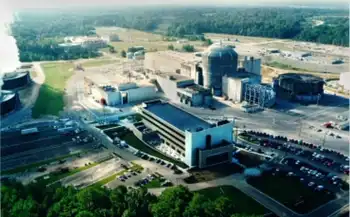Hydropower largely an untapped resource in Kentucky
MERCER COUNTY, KENTUCKY - Hydroelectric power plants are springing up in coal-rich Kentucky as companies seek out renewable resources to meet an increasing demand for energy.
The plants use the power of moving water to generate electricity.
The Mother Ann Lee generating station in Mercer County is one of four new hydropower facilities working or planned in Kentucky, The Courier-Journal reported. The plant, once retired in 1999, will soon provide enough power for 2,000 homes by selling electricity to the Salt River Electric Cooperative.
"We are at the beginning of a renewable energy revolution," said the plant's co-owner, David Brown Kinloch, a Louisville engineer. "There will be others that follow."
While other states can draw power from abundant wind or sunshine, Kentucky has consistent rainfall, and a lot of rivers. Many are already dammed for navigation, flood control or recreation, giving the state a potentially rich hydroelectric resource.
A recent survey found that there are 20 other potential hydro projects at existing dams that have received preliminary permits from the Army Corps of Engineers or the Kentucky River Authority. Fifteen others also show potential to produce electricity, said Brown Kinloch, a former energy analyst for past Kentucky attorneys general who conducted the survey.
The Mother Ann Lee plant is a project of Lock 7 Hydro Partners, which consists of Brown Kinloch, David Coyte of Louisville and Bob Fairchild of Berea, and Salt River Electric Cooperative. The other projects already under way are at the Cannelton, Smithland and Melhdahl locks and dams on the Ohio River.
Brown Kinloch's survey found that the state has enough lock-and-dam structures or flood-control dams that could be retrofitted to generate as much as 887 megawatts of electricity.
Added up, that could power as many as 877,000 homes.
Some of the projects could face questions about disturbing water reservoirs, interfering with flood control and slowing navigation. And others have engineering challenges, said Ken Lamkin, the Louisville-based hydropower coordinator for the Army Corps of Engineers.
"There can be large initial costs," he said. "It just depends on the energy market and whether the long-term profits are there to make that initial cost worth it."
Tom FitzGerald, a lawyer who directs the Kentucky Resources Council, said his group plans to urge next year's General Assembly to add incentives to attract capital investment in low-impact hydropower, and requirements that utilities operating in the state get some of their power from renewable sources.
Related News

The Haves and Have-Nots of Electricity in California
PARADISE, CA - The intentional blackout by California’s largest utility this week put Forest Jones out of work and his son out of school. On Friday morning Mr. Jones, a handyman and single father, sat in his apartment above a tattoo parlor waiting for the power to come back on and for school to reopen.
“I’ll probably lose $400 or $500 dollars because of this,” said Mr. Jones, who lives in the town of Paradise, which was razed by fire last year and is slowly rebuilding. “Things have been really tough up here.”
Millions of people were affected by the blackout, which…




